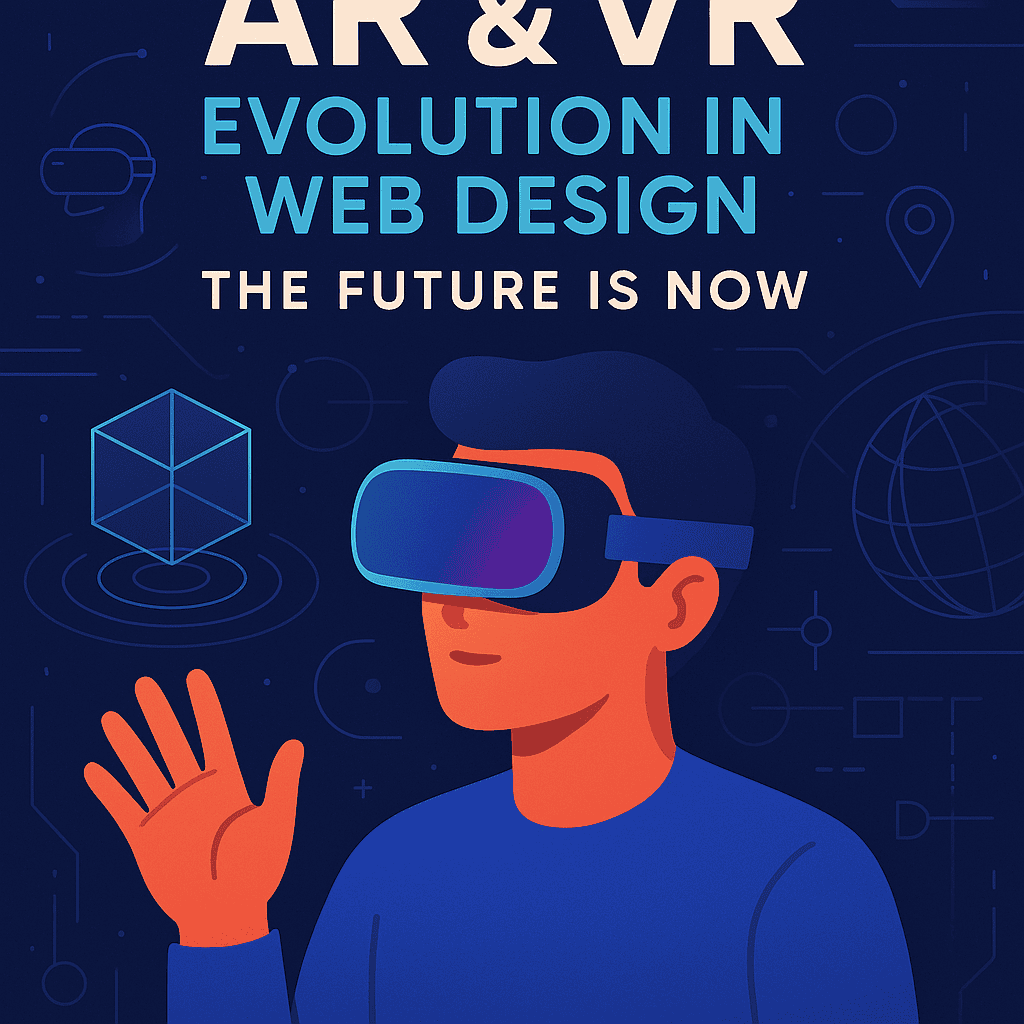As the internet evolves, so do user expectations. Gone are the days when static pages and minimal interaction satisfied digital users. Today, the demand is for dynamic, interactive, and immersive experiences. That’s where custom web development meets emerging technologies like Augmented Reality (AR) and Virtual Reality (VR)—redefining what it means to design for the web.
Both AR and VR are transitioning from experimental technologies to integral tools in modern web design. They’re already revolutionizing ecommerce, education, hospitality, real estate, and beyond—bringing digital spaces to life in ways that were unimaginable just a few years ago.
But how exactly is AR/VR changing the design landscape, and what should businesses and developers be doing to stay ahead?
Let’s explore.
Understanding AR and VR in Web Design
What is Augmented Reality (AR)?
AR overlays digital elements—like images, 3D models, or text—on top of the real-world environment through a device’s camera. Think of virtual furniture placement on IKEA’s app or Instagram filters.
What is Virtual Reality (VR)?
VR, on the other hand, creates an entirely virtual environment, often requiring a headset like Oculus or Meta Quest. Users are fully immersed in a 3D space that can be navigated and interacted with.
WebAR and WebVR
These are browser-based implementations of AR and VR, eliminating the need for app downloads or high-end hardware. Technologies like WebXR API and A-Frame (a web framework for building 3D/VR experiences) are making immersive content more accessible across devices.
Why AR & VR Are Game-Changers in Web Design
-
Enhanced User Engagement
Immersive web experiences hold attention longer. In fact, studies show that users interacting with AR features spend up to 2.5x more time on a website compared to traditional interfaces.
Whether it’s a virtual tour of a hotel, a try-before-you-buy fashion demo, or a 3D product unboxing—interactive content keeps users engaged and reduces bounce rates.
-
Improved Product Visualization
Particularly in ecommerce, AR allows users to “try on” products virtually—whether it’s glasses, shoes, or even sofas. This functionality minimizes return rates and boosts buyer confidence.
VR enables immersive showrooms where customers can walk through digital stores without stepping outside their homes.
-
Next-Level Storytelling
AR/VR lets brands tell richer, more immersive stories. Imagine a travel agency letting you walk through the beaches of Bali or an architecture firm offering a VR tour of a not-yet-built home. It’s a transformative approach to emotional marketing.
Real-World Applications of AR & VR in Web Design
-
Ecommerce
AR for product previews (Warby Parker, IKEA Place)
VR for virtual shopping experiences (Alibaba’s Buy+)
-
Real Estate
VR home tours are replacing traditional open houses. Prospective buyers can explore properties from their couch—saving time and increasing global reach.
-
Education & Training
From medical simulations to historical recreations, VR makes complex learning engaging. AR helps overlay guidance and contextual instructions in real-time.
-
Hospitality & Travel
Hotels now offer 360° virtual tours of rooms and amenities. AR enhances local experiences by offering real-time guides or translating signs and menus.
Challenges and Considerations in AR/VR Web Integration
Despite their exciting potential, integrating AR/VR into websites isn’t plug-and-play. It requires strategic planning, design expertise, and advanced custom web development.
-
Device and Browser Compatibility
Not all browsers support WebXR or 3D rendering equally. Ensuring seamless fallback content for non-supported devices is critical for usability.
-
Performance and Load Time
Immersive media is heavy. Without optimization, 3D elements can severely affect page load speed—harming SEO and user experience.
Solution: Use lazy loading, model compression (glTF), and progressive enhancement techniques.
-
Accessibility
Current AR/VR interfaces still lag in accessibility for users with visual or mobility impairments. Designers must incorporate accessible navigation and alternative content wherever possible.
The Role of Custom Web Development in AR/VR Design
AR and VR require more than templates—they demand custom web development to build optimized, scalable, and immersive frameworks.
Key Tech Stack Includes:
- Three.js and Babylon.js for 3D modeling
- A-Frame for VR experiences
- 8thWall and ZapWorks for WebAR implementation
- WebGL for real-time graphics rendering
- WebXR API for AR/VR hardware integration
By blending these frameworks with tailored development, your site can deliver high-impact experiences while maintaining performance.
How Responsive Website Design Adapts to AR & VR
You might ask—how does responsive website design come into play with immersive content?
The Answer: Device-Agnostic Immersion
A truly immersive website adapts AR/VR experiences to:
- Mobile devices with camera and gyroscope
- Desktop browsers with mouse/keyboard interaction
- VR headsets with motion tracking
Responsive design isn’t just about layout anymore. It’s about delivering immersive interactions that scale across platforms.
Future Trends in AR/VR Web Design
-
Web3D as a Standard
The merging of spatial web and 3D interfaces will make static websites a relic of the past. Expect homepages to resemble explorable environments instead of scrollable blocks.
-
Haptic Feedback Integration
Websites will soon engage the sense of touch via VR gloves or controller feedback—amplifying immersion and usability.
-
Voice and Gesture-Based Navigation
As AR/VR matures, traditional navigation bars and dropdowns will be replaced by voice commands, eye-tracking, and hand gestures.
-
AI-Driven Immersive Content
AI tools will automate the generation of 3D environments, character interactions, and real-time translations—personalizing immersive journeys for each user.
Best Practices for Integrating AR/VR into Your Website
- Start Small: Begin with a single AR feature or 360° tour before investing in full VR.
- Focus on Performance: Compress assets and use CDNs for 3D content delivery.
- Ensure Accessibility: Offer alternatives and captions for immersive content.
- Test Across Devices: Verify user experience on mobile, desktop, and VR headsets.
- Partner with Experts: Work with agencies or developers skilled in immersive tech and custom web development.
A New Era of Web Experience Is Here
The evolution of AR and VR in web design isn’t a fad—it’s the next chapter of digital transformation. As technology becomes more accessible and users demand more immersive experiences, integrating these tools into your website isn’t just “nice to have”—it’s a competitive advantage.
From interactive 3D product showcases to immersive brand storytelling, AR and VR are reshaping what it means to engage online. At Website Legends, we specialize in building the future-ready digital experiences that today’s users crave. Whether through immersive UI, responsive website design, or advanced custom web development, we help brands lead—not follow—the evolution.


